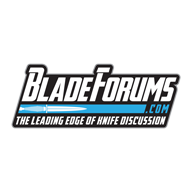- Joined
- Mar 6, 2022
- Messages
- 317
Once again, I am getting myself confused by inputting too much information from divers sources.
In some circumstances I am seeing people milling some relief on folders around where the tang would be. In others I see a bigger hole put in the pivot and a bushing put in it. And in yet some others, I am seeing 0.005 washers put in on either side of the blade. Yet others may even suggest combining these things. And even others suggesting that these things make no difference.
Is it just adding specific specific value to the final product? I saw something that suggested it prevented scratches from appearing on the ricasso or some such thing.
So the question is, is this necessary? If so, which is the best bang for the buck?
Any clarification or suggestions.
In some circumstances I am seeing people milling some relief on folders around where the tang would be. In others I see a bigger hole put in the pivot and a bushing put in it. And in yet some others, I am seeing 0.005 washers put in on either side of the blade. Yet others may even suggest combining these things. And even others suggesting that these things make no difference.
Is it just adding specific specific value to the final product? I saw something that suggested it prevented scratches from appearing on the ricasso or some such thing.
So the question is, is this necessary? If so, which is the best bang for the buck?
Any clarification or suggestions.

